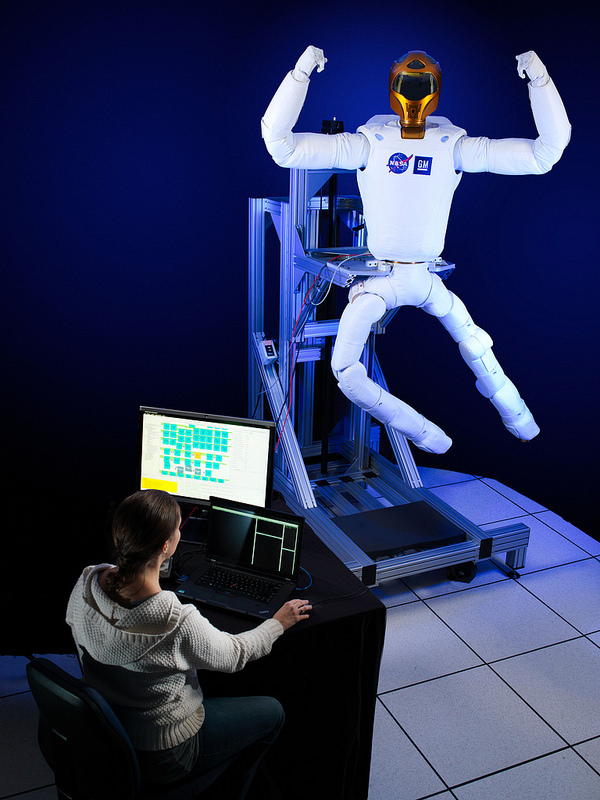There was much excitement two years ago when the astronauts on space station unpackaged Robonaut 2 (or R2), which is supposed to help with simple tasks. Trouble was, the robot was basically anchored in place and had to be moved around for different tasks. Well, that’s about to change. R2 is getting some “climbing” legs.
After the legs are brought to station and installed — likely sometime early in the new year — Robonaut will be capable of doing tasks both inside and outside (well, outside once a few more unspecified upgrades are finished). This reduces the human risks during spacewalks and frees up the astronauts to do more complicated tasks, NASA said.
“Once the legs are attached to the R2 torso, the robot will have a fully extended leg span of 9 feet, giving it great flexibility for movement around the space station,” NASA stated.
“Each leg has seven joints and a device on what would be the feet called an end effector, which allow the robot to take advantage of handrails and sockets inside and outside the station. A vision system for the end effectors also will be used to verify and eventually automate each limb’s approach and grasp.”
By the way, end effectors were famously used on the Canadarm series of robotic arms that were originally used for grappling satellites. Who knew back in the 1970s that this could be extended to humanoid robots?
Source: NASA

